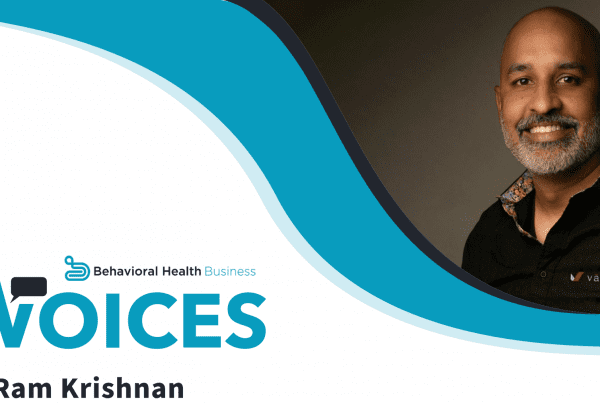A growing body of research affirms that behavioral health treatments are far more effective when clinicians use objective measures to assess patient progress. This practice, known within behavioral health as measurement-based care, involves the repeated screening of patient symptoms over time using standardized measurement tools crafted for specific diagnoses.
Implemented correctly, it yields better outcomes for patients and providers alike.
A literature review of 51 relevant studies concluded that “virtually all randomized controlled trials with frequent and timely feedback of patient-reported symptoms to the provider during the medication management and psychotherapy encounters significantly improved outcomes” (Fortney et al., 2016).
“Improved outcomes” can include greater relief from symptoms in a faster timeframe, enhanced patient involvement in the treatment process, and other positive gains. It also aids clinicians in their own professional development.
How could measurement-based care enhance patient outcomes at your practice?
How measurement-based care improves patient outcomes in mental health:
More Data to Work With
Measurement-based care allows a clinician to assess the severity and evolution of a patient’s specific symptoms over time. It provides concrete data on whether those symptoms respond to a particular treatment and the strength of the response.
This data helps you tease out which treatments work well and which don’t for each individual patient, allowing for more specific treatment interventions.
Additionally, because the data reveals the change in symptoms over time rather than solely focusing on symptoms at the time of clinical encounter, it can provide powerful encouragement to patients. Patients who haven’t yet reached an ideal state of symptom remission can nevertheless see a record of gradual improvement and grow more confident in the treatment process. This increases patient adherence to treatment plans.
Faster Outcomes
With more data and better treatment specificity come faster results. Data showing little to no symptom improvement over time can give you the confidence to switch tactics sooner, rather than guessing how long you should “wait and see.” Prompt results are important for your patients’ well-being, for the efficiency of your practice, and for your reputation among referral sources.
This especially impacts providers who prescribe medication. Clinicians have no biological markers to indicate which pharmacological interventions will work best for a given patient, so such treatments are at risk of succumbing to trial and error. Symptom rating scales help you quickly detect whether a patient’s symptoms have responded to a new medication or whether a change is in order.
Patient Collaboration
Measurement-based care helps patients better understand their condition. As they answer symptom screening questions and discuss them with their clinician, they gain language to precisely describe their experiences, and they become attuned to the telltale signs of worsening symptoms or relapse. The patients themselves become more adept at “screening” their symptoms day-to-day.
Symptom evaluation can also reassure patients that they aren’t alone in their feelings, that many other people who share their diagnosis experience similar pain, and that these struggles do not indicate personal weakness.
Consistent, Objective Decision-Making
Objectivity and consistency in clinical decision-making can boost patient outcomes. Measurement-based care provides the unambiguous benchmarks needed to score a patient’s symptoms severity. Clinicians can better assess where a patient stands in respect to normative samples, whether they are moving in a positive or negative direction, and how quickly that change is taking place.
Outcomes data also helps in developing standards for concepts like “response” and “remission.” For example, you might define “response” to depression treatment as a 50 percent reduction in the client’s PHQ9 score, and “remission” as a score under 7. Without that standard, two providers might operate from different definitions of what depression “remission” looks like.
Viewing the data in aggregate can also give insight into treatment algorithms for a variety of diagnoses. Over time, outcomes data for multiple patients treated with varying algorithms may indicate which protocols work and which do not yield significant results.
Risk-stratify Your Patients
When patients complete a symptom screening prior to their intake appointment, you gain helpful context on their life and mental health before you walk into the clinical encounter. This allows your practice to prioritize those patients who are in crisis and need more immediate help. Clinicians’ time can be directed where it will have the greatest impact.
Along the same lines, specific outcomes data indicating severe risk can trigger additional assessment and intervention as needed. For example, certain questions about suicidality might indicate the need for a rapid response and a more aggressive treatment approach. Many health systems already employ this basic idea as part of their Zero Suicide protocol.
How measurement-based care improves your overall practice
This approach to behavioral health doesn’t just impact the lives of your individual clients. Clinicians, practices, and the entire behavioral health industry are bettered as measurement-based care becomes more widely used.
Patient outcomes can reveal which diagnoses a clinician or practice handles most capably, and which diagnoses may require additional support. Poor patient outcomes might spur a clinician to pursue needed professional development, or suggest the need for a practice to investigate new treatment approaches and program offerings. Large practices operating programs targeted to specific diagnoses can compare outcomes between programs to identify which yield strong outcomes and which don’t make an appreciable difference and should be reworked or scratched.
The data on patient results can be invaluable in helping you get more business and greater resources. Positive outcomes data can encourage referral sources to send more patients your way, and aggregate data on common symptoms between patients can suggest new programs that your target population would benefit from.
Data can even be used to secure funding. Before a payor invests in something, they need to be confident of the return on their investment. It’s hard to prove ROI when you don’t have concrete results to back it up. Measurement-based care gives you those results. It proves to potential investors that behavioral health makes a tangible difference in the daily lives of patients.
Chronic under-funding is one factor holding back the behavioral health industry from its full potential. Aggregated data proving the impacts of behavioral health is an important tool in changing this trend.
Seize the opportunity
At the heart of measurement-based care is opportunity—the opportunity to help more people faster, the opportunity to improve as a clinician, and the opportunity for a practice to improve its quality of care and program offerings.
Seizing the opportunities, however, requires implementing measurement-based care in the proper way. One of the best tools in your toolbox is an EHR that can seamlessly handle measurement-based care. Valant software was built by behavioral health professionals from the ground up with this purpose in mind.
Learn about how Valant can help you take advantage of everything measurement-based care has to offer.





